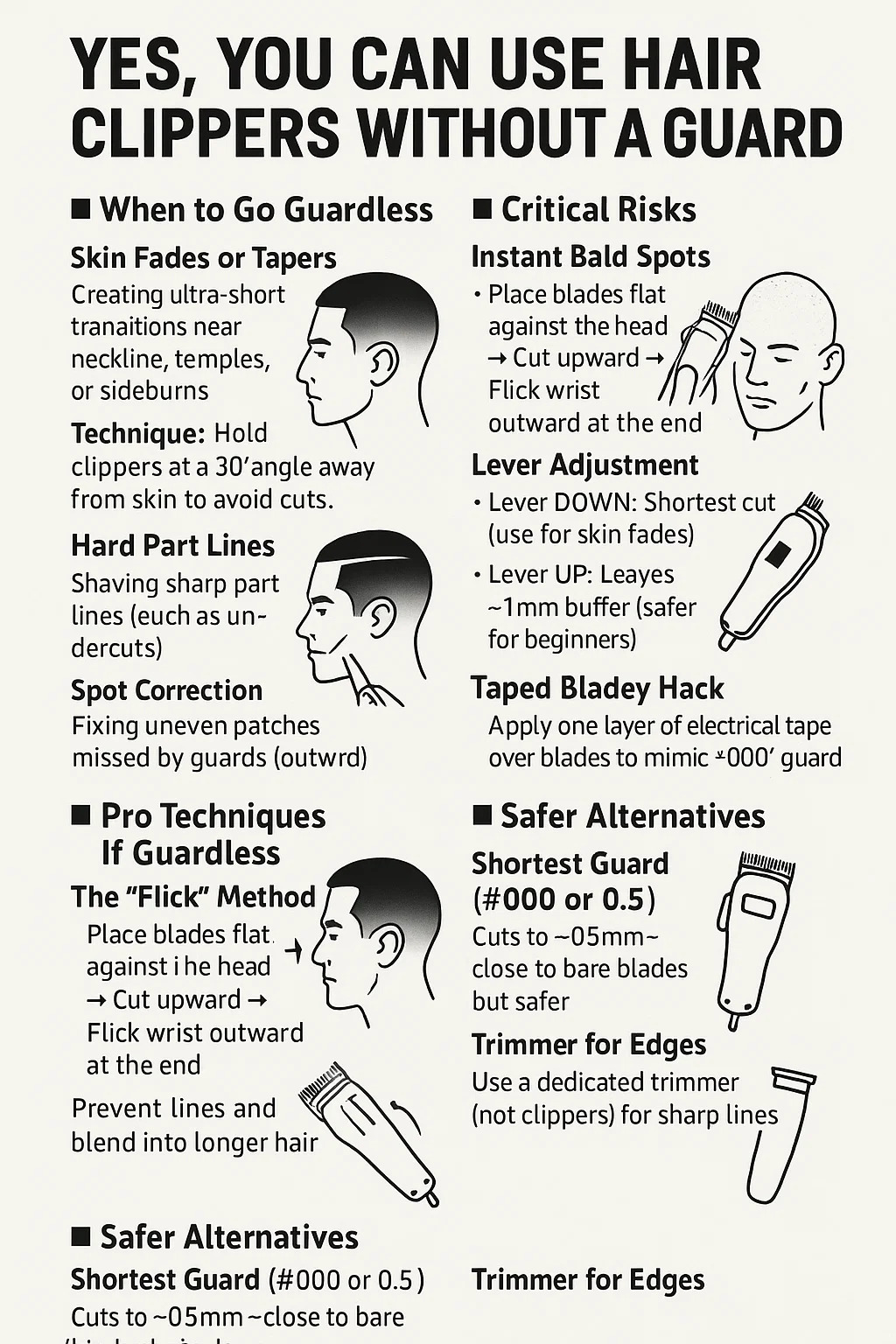Yes, you can use hair clippers without a guard, but it requires caution and specific techniques. Here's what you need to know:
■When to Go Guardless
1.Skin Fades or Tapers
Use case: Creating ultra-short transitions near the neckline, temples, or sideburns.
Technique: Hold clippers at a 30° angle away from the skin to avoid cuts.
2.Hard Part Lines
Use case: Shaving sharp part lines (e.g., undercuts).
Technique: Use the corner of the blades only—never the full blade width.
3.Spot Correction
Use case: Fixing uneven patches missed by guards.
Technique: Lightly "flick" blades outward (don’t press into the scalp).
■Critical Risks
1.Instant Bald Spots
Bare blades cut hair to 0.2–0.5mm (near bald). One slip creates irreversible patches.
2.Skin Irritation/Cuts
Blades can scrape moles, acne, or sensitive skin. Never use on bony areas (crown, hairline).
3.Uneven Results
Without guard guidance, it's easy to cut deeper in some spots than others.
■Pro Techniques If Guardless
1.The "Flick" Method
Place blades flat against the head → Cut upward → Flick wrist outward at the end.
Prevents lines and blends into longer hair.
2.Lever Adjustment
Lever DOWN: Shortest cut (use for skin fades).
Lever UP: Leaves ~1mm buffer (safer for beginners).
3.Taped Blades Hack
Apply one layer of electrical tape over blades to mimic a "000" guard.
4.When to NEVER Go Guardless
Curly/Coarse Hair: Higher risk of ingrown hairs and irritation.
Scalp Conditions: Dandruff, psoriasis, or sunburned skin.
DIY Back/Side Cuts: Impossible to see angles—guaranteed unevenness.
■Safer Alternatives
1.Shortest Guard (#000 or #0.5)
Cuts to ~0.5mm—close to bare blades but safer.
2.Trimmer for Edges
Use a dedicated trimmer (not clippers) for sharp lines.




 简体中文
简体中文











